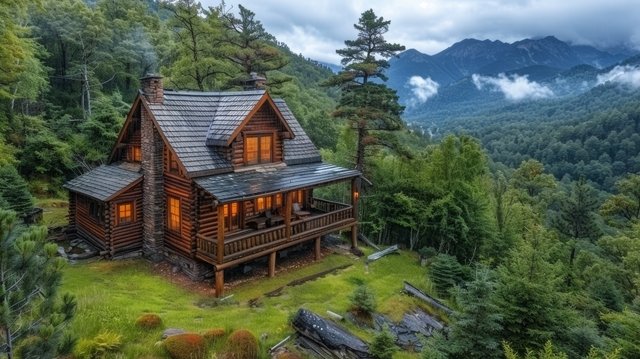Log cabin kits have gained traction for their rustic charm and robust structure blend. They come complete with all the necessary components to construct a sturdy cabin, simplifying the building process. The popularity of log cabins is rooted in their ability to mix traditional aesthetics with modern construction techniques. This combination results in homes that are not only attractive but highly durable and practical, especially for those who appreciate nature-inspired living spaces.
Weather Resistance Features
Log cabins are renowned for their ability to withstand various weather conditions. Their natural density offers superb insulation, while modern sealing techniques prevent moisture penetration—a significant concern in wooden structures. This design makes log cabins viable in climates ranging from humid to dry.
The structural integrity of log cabins comes from their interlocking design, which enhances their resistance to strong winds and heavy snowfall. These features ensure that cabins remain cozy and secure, regardless of external weather extremes.
Construction Quality and Longevity
The durability of a log cabin heavily depends on the quality of construction. High-quality materials ensure that the cabin can withstand environmental challenges over the years. Precision in craftsmanship and careful selection of materials are crucial for enhancing the cabin’s lifespan.
Properly executed construction includes sealed joints and a solid foundation, protecting the structure from environmental wear and enhancing overall resilience. Consulting with experienced professionals during the building process optimizes both design and durability.
The Impact of Maintenance
Even the most durable log cabins require regular maintenance to maintain their condition. Routine inspections can detect early wear indicators, enabling prompt repairs. Sealing and treating the wood protects it from moisture and pests, maintaining the cabin’s structural integrity.
Consistent maintenance does more than extend the lifespan; it preserves the cabin’s aesthetic quality, ensuring it remains a welcoming retreat. A proactive approach to maintenance rewards homeowners with a log cabin that continues to offer comfort and security.
Sustainable Practices and Materials
Using sustainable materials is vital for enhancing the longevity of log cabins. Choosing eco-friendly finishes and insulation benefits the environment and significantly lowers maintenance needs. Sustainable building practices lead to a reduced carbon footprint and a home that aligns with ecological values.
Integrating sustainability into the construction of log cabins maximizes their environmental and practical value, creating resilient and sustainable homes.
Adapting to Different Climates
Because they are adaptable to diverse temperatures, log homes can be used in various settings. In colder regions, additional insulation and efficient windows can help conserve energy, while in warmer climates, reflective roofing and efficient ventilation can enhance comfort.
This adaptability ensures that a log cabin can be a comfortable residence, regardless of geographical location, providing aesthetic rewards and practical benefits.
Conclusion
Log cabins offer a unique blend of traditional beauty and modern resilience. Their durability, supported by quality construction and regular maintenance, makes them a sustainable choice. Log cabins provide a peaceful, enduring living space using high-quality, eco-friendly materials.
Log cabins are a popular choice for anyone looking for a harmonic blend of modern living and rustic charm because of their versatility, durability, and timeless appeal. Providers like Frontier Log Homes offer kits that accommodate a variety of styles, providing both aesthetic appeal and high functionality.
